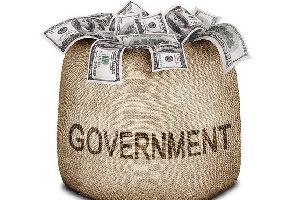Why Food Is Getting More Expensive for Everyone
Narrator: Have you noticed that the price of your groceries has gone up? Bread, meat, milk, cheese, eggs – are all more expensive, and it’s something we’re seeing throughout most of the globe. So, what is behind the price increase?
The United Nations’ Food Price Index tracks the monthly change in the price of a basket of food items. The five commodities making up this basket are cereals, vegetable oils, sugar, meats and dairy products. In March of 2022, the index recorded the highest price levels in its three-decade history. It has since come off that high slightly, but it is still well above levels seen in previous years.
The UN body’s chief economist warned prices won’t be going back to normal anytime soon.
Maximo Torero: They will continue increasing because we will be not having the plantings regular planting season for these two countries. And that could have a significant effect in the world.
Narrator: The two countries he’s referring to here are, unsurprisingly, Russia and Ukraine. Russia’s unprovoked invasion of Ukraine and rising energy prices are the two main reasons why food is getting more costly. But why is food price inflation so widespread? Let’s take a closer look.
Rob Percival: Prices are really complicated. They’re shaped by all sorts of things. We’ve had the Ukraine crisis, which has really thrown the world’s food system into disarray in some respects. Ukraine is one of the bread baskets in Europe. It is where we produce lots of our crops, and many of those crops have been unable to…to leave the country. And farmers right now in Ukraine are meant to be planting the next season’s crops, and they haven’t been able to, so we can expect these issues to…to continue as well.
Narrator: Ukraine is known for its fertile soils. It is a top exporter of sunflower oil, corn, and grains. Ukraine and Russia combined produce more than a quarter of the global wheat supply. So you can understand how disruptions in these markets can cause massive shocks to our global food supply.
Maximo Torero: For sure, it is becoming a global problem. We are talking of around 50 countries that have more than 30% of their imports dependent from Russian Federation and Ukraine. And of those, 20 countries have 50% of the exports depending on Ukraine.
Narrator: For instance, look at some of the countries that are highly dependent on Russia and Ukraine for wheat imports. Eritrea, Armenia, Mongolia, Azerbaijan, Georgia and Somalia get more than 90% of their wheat imports from the two countries alone. Distressingly, there is a growing number of analysts, academics and policymakers saying that Russia is intentionally weaponizing food supplies as a part of Vladimir Putin’s war strategy. The fear is that much of the developing world will starve as a result.
As if that weren’t enough to contend with, energy prices were already high before the war. The conflict has only made things worse. And that has trickled down to your food bill.
Rob Percival: We’ve seen rising gas prices, and that’s increased the cost of fertilizers. And many farmers are reliant on these…these fertilizers, these industrially produced fertilizers, which rely on natural gas for their manufacture. So that’s edged food prices up.
Narrator: Natural gas, which is used as a raw material and fuel for making nitrogen fertilizers, accounts for about 80% of the production cost. With natural gas prices in Europe soaring almost 300% over the last 12 months, the cost of fertilizers has naturally gone up, too. Major producers such as China and Russia have also put export bans in place to protect their domestic markets. This is adding to the upheaval, affecting the type of crops being planted and the planting season. Some crops like wheat, rice and corn, for example, are highly reliant on fertilizers. In addition, the demand for alternatives to fossil fuels has led to the growth of biofuels such as vegetable oils like palm and rapeseed oil. As more farmers grow these cash crops, this drives up the prices for other crops competing for a limited amount of land.
And with inflation through the roof, some governments have started to impose restrictions on the exports of their energy crops, too. Towards the end of April, Indonesia, the world’s largest exporter of vegetable oil, imposed a three-week ban on the international sales of its palm oil. Meanwhile, India also decided to ban exports of wheat, which, you may remember, is a fertilizer-intensive crop. Europe’s trade chief says these decisions only make the situation worse.
Valdis Dombrovskis: Countries are starting to take export restrictive measures, and we think that is tendency which can actually only aggravate a problem.
Narrator: Financial services company Nomura warned that several major economies will fall into a recession next year.
George Buckley: You could see recessions in certain countries more likely than others – for example, Europe. Europe spends a lot more money on food and fuel relative to GDP than, for example, the U.S. or the U.K. So it could be that that has a more direct and larger impact on people’s ability to spend.
Narrator: Expand a little bit on that point. Let’s step back and explain why this increase in food prices is a problem.
George Buckley: So it’s…it’s a problem because it limits the amount of disposable income that people have to spend on other items. If you think about the people who are affected the most, it tends to be the poor because they have a much greater spend on those items relative to their…relative to their total spending. So it could be really constraining for those households in particular, but for the economy as a whole.















